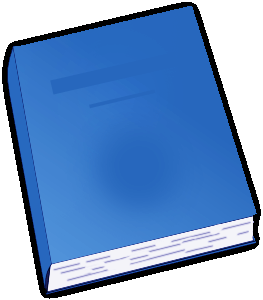The Works of William Hogarth: In a Series of Engravings With Descriptions, and a Comment on Their Moral Tendency By: John Trusler (1735-1820) |
|---|

In "The Works of William Hogarth: In a Series of Engravings With Descriptions, and a Comment on Their Moral Tendency" by John Trusler, readers are offered a comprehensive exploration of the celebrated works of the famous 18th-century English painter and engraver, William Hogarth. Trusler's meticulous descriptions, accompanied by Hogarth's captivating engravings, create an engaging and enlightening experience for art enthusiasts and history lovers alike.
One of the most notable aspects of this book is Trusler's insightful commentary on the moral implications of Hogarth's creations. As an accomplished writer and cleric, Trusler brings a unique perspective to the discussion, enriching our understanding and appreciation for Hogarth's artistic choices. He skillfully examines each engraving and the story it tells, highlighting the underlying social and moral issues prevalent in 18th-century England.
Trusler's writing style is clear and easily accessible, allowing readers from various backgrounds to engage with the material. He precisely conveys the circumstances surrounding each of Hogarth's artworks, shedding light on their historical context and significance. Furthermore, Trusler's thorough descriptions enhance the visual experience, enabling readers to fully appreciate the intricate details and hidden meanings within each engraving.
The inclusion of numerous engravings throughout the book is a definite strength. Hogart's works are notorious for their ability to depict entire narratives within a single frame, portraying scenes brimming with life and conveying powerful emotions. Trusler's decision to present these engravings alongside his analysis ensures readers can immerse themselves fully in the artistry of Hogarth and grasp the depth of his moral message.
However, despite the overall strength of Trusler's analysis, there are instances where his observations may come across as overly didactic or preachy. While his intention to emphasize the moral significance of Hogarth's works is clear, a more balanced approach would have allowed readers to draw their own conclusions. Nevertheless, this slight drawback does not detract significantly from the overall value of the book.
"The Works of William Hogarth: In a Series of Engravings With Descriptions, and a Comment on Their Moral Tendency" serves as an exceptional guide to the artistic and moral legacy of Hogarth. Trusler's insightful commentary and Hogarth's captivating engravings come together to offer a profound exploration of 18th-century society. This book is a must-read for both art enthusiasts and those interested in the social and cultural dynamics of the time, as it invites readers to dive deep into the world created by one of the most influential artists of his era. THE WORKS OF WILLIAM HOGARTH; IN A SERIES OF ENGRAVINGS: WITH DESCRIPTIONS, AND A COMMENT ON THEIR MORAL TENDENCY, BY THE REV. JOHN TRUSLER. TO WHICH ARE ADDED, ANECDOTES OF THE AUTHOR AND HIS WORKS, BY J. HOGARTH AND J. NICHOLS. London: PUBLISHED BY JONES AND CO. TEMPLE OF THE MUSES, (LATE LACKINGTON'S,) FINSBURY SQUARE. 1833. C. BAYNES, PRINTER, 13 DUKE STREET, LINCOLN'S INN FIELDS. THE LIFE OF HOGARTH. William Hogarth is said to have been the descendant of a family originally from Kirby Thore, in Westmorland. His grandfather was a plain yeoman, who possessed a small tenement in the vale of Bampton, a village about fifteen miles north of Kendal, in that county; and had three sons. The eldest assisted his father in farming, and succeeded to his little freehold. The second settled in Troutbeck, a village eight miles north west of Kendal, and was remarkable for his talent at provincial poetry. Richard Hogarth, the third son, who was educated at St. Bees, and had kept a school in the same county, appears to have been a man of some learning. He came early to London, where he resumed his original occupation of a schoolmaster, in Ship court in the Old Bailey, and was occasionally employed as a corrector of the press... Continue reading book >>
|
| eBook Downloads | |
|---|---|
|
ePUB eBook • iBooks for iPhone and iPad • Nook • Sony Reader |
Kindle eBook • Mobi file format for Kindle |
|
Read eBook • Load eBook in browser |
Text File eBook • Computers • Windows • Mac |
| Review this book |
|---|